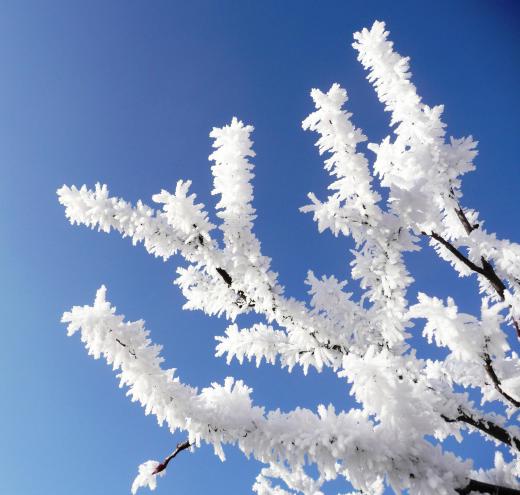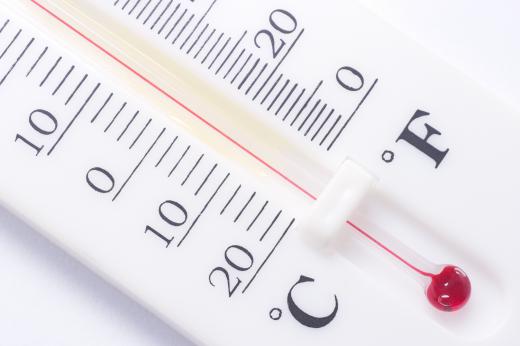What Is the Dew Point?
 Mary McMahon
Mary McMahon
The dew point is the temperature at which a given air mass will be fully saturated with water and unable to hold any more, which means that dew will start to form. When the dew point is below 32 degrees Fahrenheit (0 degrees Celsius), it is known as the “frost point,” referencing the fact that frost will form rather than dew because the temperature is so low. This weather data is important to a number of people, such as pilots, who use information about these temperatures to predict potential aviation hazards.
Dew point measurements assume that the barometric pressure will remain constant. If the level of pressure changes, this can bring this point up or down. This number can also be altered by changes in the air mass, such as a collision with another mass of air, but it can be a useful yardstick. As a general rule, clouds and fog will start to form when the total saturation point is reached.

People often define the dew point as the temperature to which an air mass would need to cool in order to begin precipitating water, which can be a helpful way to look at it. The higher this point is, the more uncomfortable conditions are for humans, because it suggests that the air is very close to being fully saturated at the present temperature. As a general rule, when this measurement exceeds 70 degrees Fahrenheit (21 degrees Celsius), it becomes rather unpleasant, and people may feel like the air is “soupy” because of the high moisture content.

Relative humidity also involves the dew point, but it is important to remember that relative humidity can be deceptive, because it is dependent on a relationship between the current temperature and the point at which the air becomes fully saturated. Relative humidity is arrived at by looking at the difference between the actual temperature and the dew point, and the determining the percentage of water saturation in the air.

If the temperature only needs to drop a few degrees to reach the dew point, relative humidity will be high, because the air is almost totally saturated, while if a dramatic temperature drop is needed, relative humidity will be low, because the saturation point is a long way away. However, the measurement can still be very high, which means the weather will not be enjoyable, especially when paired with a high temperature. Some people prefer to look at the dew point when thinking about the level of water saturation in the air, as relative humidity can be so deceiving.
AS FEATURED ON:
AS FEATURED ON:














Discuss this Article
Post your comments